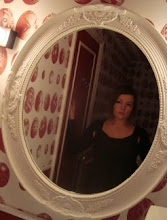 Can you remember the times when you couldn't read and write? Probably it's hard to imagine not to be able to do so. I'm back to that...
Can you remember the times when you couldn't read and write? Probably it's hard to imagine not to be able to do so. I'm back to that... Japanese uses three different types of scripts: Hiragana and Katakana, two syllable scripts and Kanji, the Chinese signs. I have learned Hiragana and Katakana which are a limited number of characters, but it still takes quite some time and effort to get them into your head and become fluent. I have written endless rows of both Hiragana and Katakana. It's an oldfashioned and very boring method, but I don't know anything better. So I guess it's necessary to do it.
Now that I am a proud Hiragana and Katakana "master" (well, I can't do Japanese songs at karaoke yet because it's too fast), I need to start tackling the kanji. These are far more complicated and usually made up of way more strokes. And there are endless numbers of them. You should learn about 1900 to be able to fluently read Japanese. That's an awful lot!
It's really frustrating when you go to bookshops and can't read a thing. The texts are  always written in a mix of Hiragana, Katakana and Kanji. All nouns are usually written in Kanji, except for words with a foreign origin (-> Katakana) and flexions, particles, verb conjugations and alike (-> Hiragana).
always written in a mix of Hiragana, Katakana and Kanji. All nouns are usually written in Kanji, except for words with a foreign origin (-> Katakana) and flexions, particles, verb conjugations and alike (-> Hiragana).
 always written in a mix of Hiragana, Katakana and Kanji. All nouns are usually written in Kanji, except for words with a foreign origin (-> Katakana) and flexions, particles, verb conjugations and alike (-> Hiragana).
always written in a mix of Hiragana, Katakana and Kanji. All nouns are usually written in Kanji, except for words with a foreign origin (-> Katakana) and flexions, particles, verb conjugations and alike (-> Hiragana). The reason why they do not simply use the much easier Hiragana and Katakana only is that the Japanese language has a limited set of sounds at hands only. Many words have various meanings, but are written (in Hiragana) and pronounced the same way. You could sometimes guess from the context which meaning is applicable for a particular case, but it could often be confusing. The kanji have one clear meaning, so it helps clarifying which expression is really meant.
As a courtesy to foreigners (I guess?) there exist certain publications that use only hiragana and katakana, like the "Hirag@ana Times. I bought it to practise a bit and might be able to understand a few things, that would be a cheer up.

No comments:
Post a Comment